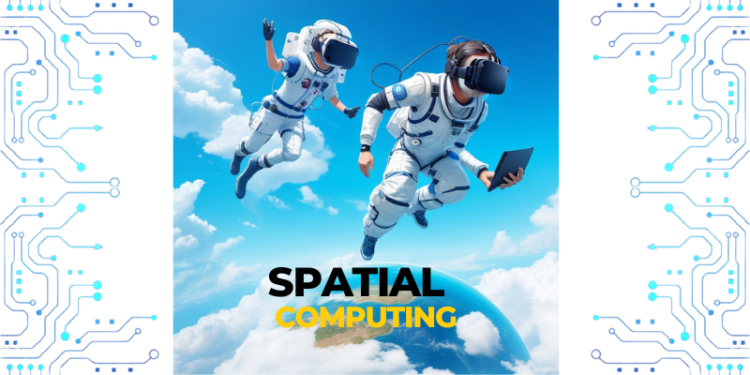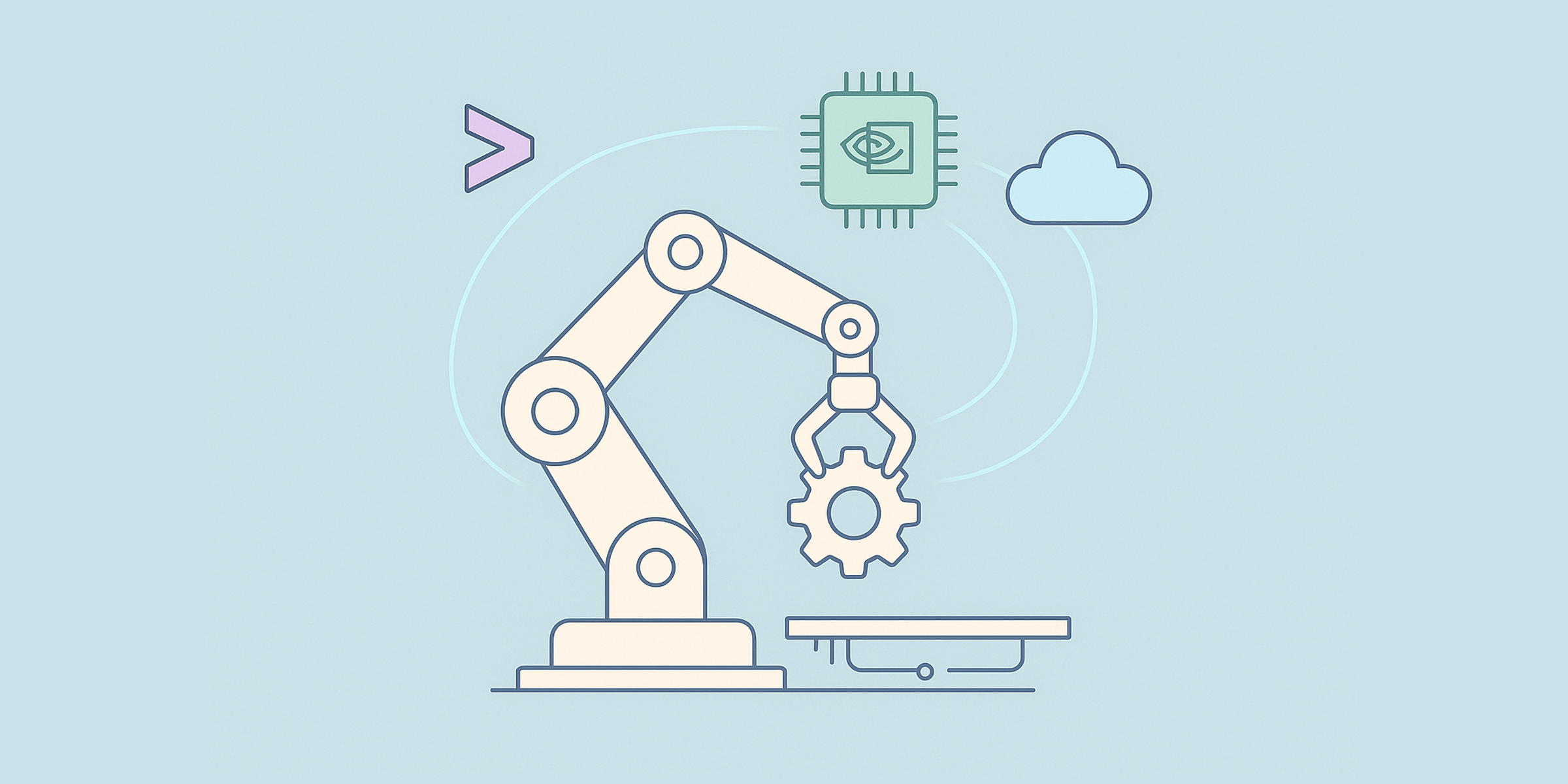Welcome to the future! No, really – we’re not kidding. The world of spatial computing is rapidly emerging, and it’s set to change almost everything about how we interact with technology in our day-to-day lives. Spatial computing refers to any interaction between digital systems and physical environments in a way that’s natural, intuitive, and seamless.We’re talking about virtual reality gaming experiences that are so realistic you’ll forget you’re not actually living on a spaceship; smart glasses that overlay useful information onto the real world around you as you walk down the street; even robots that can move around your home autonomously without bumping into things (or pets). In this blog post, we’ll take a deep dive into what spatial computing is all about, why it matters for the future of tech innovation – and how exactly it’s going to transform our world as we know it. So buckle up – because things are about to get seriously exciting.
Overview of Spatial Computing
The concept of spatial computing is still relatively new and thus can be difficult to wrap one’s head around. In its simplest form, spatial computing is the use of computers to create and interact with digital information in three dimensions. This type of computing has the potential to revolutionize the way we work, play, and communicate.
Some examples of spatial computing applications include augmented reality (AR), virtual reality (VR), and mixed reality (MR). These technologies are all based on the idea of blurring the line between what is real and what is digital. AR allows users to view digital information in the context of their real-world surroundings. VR transports users into digital worlds that can be realistically explored and interacted with. MR combines aspects of both AR and VR to create an even more immersive experience.
The possibilities for spatial computing are nearly endless. Some other potential applications include:
- simulations for training or entertainment
- educational experiences that bring history or science to life
- interactive art installations
- enhanced customer experiences in stores or at events
- new ways to visual data
As we continue to explore the capabilities of spatial computing, it’s likely that even more innovative and impactful applications will be developed. The future is now – let’s see what we can do with this exciting new technology!
Benefits of Spatial Computing
When it comes to computing, we are used to thinking about space in two dimensions. We have a screen in front of us, and we interact with it by typing or tapping on it. But what if we could move beyond that and interact with computers in three dimensions? That’s what spatial computing is all about.
Spatial computing is still in its early stages, but there are already a few examples of it in the world around us. One example is the Microsoft HoloLens, which is a headset that allows you to see and interact with digital content in the real world. Another example is Google Tango, which uses special sensors to map out the environment around you and then place digital content within it. Meta’s Oculus Quest, and the most recent is Apple’s Vision Pro, which takes your everyday digital interactions with your device into a 3D environment.
There are many potential benefits to spatial computing. For one, it has the potential to make information more immersive and interactive. Imagine being able to walk around inside a virtual 3D model of your favorite city or historical site. Or imagine being able to put on a headset and see how a new piece of furniture would look in your living room before you buy it.
In addition, spatial computing has the potential to change the way we work and learn. For instance, doctors could use spatial computing to view patients’ medical records in three dimensions and get a better understanding of their condition. Architects could use it to explore their designs before they’re built. Students could use it for learning experiences that are more interactive and engaging than traditional textbooks or lectures.
Challenges Presented by Spatial Computing
The emergence of spatial computing is presenting a number of challenges for businesses and individuals alike. One of the most significant challenges is the need to rethink traditional business models and processes to take advantage of this new technology. Another challenge is the need to develop new skills and expertise to be able to design, build, and use spatial applications. Additionally, there are challenges around privacy and security as well as managing the increased data volumes generated by spatial computing applications. Businesses will need to manage the expectations of their customers and users who are increasingly expecting more immersive and engaging experiences from their applications.
Impact of AI and ML on Spatial Computing
The application of artificial intelligence (AI) and machine learning (ML) within spatial computing is already having a profound impact and is poised to cause even more disruption in the coming years. Here are some key ways that AI and ML are impacting spatial computing:
Enhancing 3D mapping and modeling: AI and ML are being used to create more accurate and detailed 3D maps and models of both physical and virtual spaces. For example, Google Maps now uses AI and ML to generate its Street View images, while Microsoft is using these technologies to create photorealistic 3D models of buildings for its Bing Maps service.
Improving navigation and search: AI and ML are also being used to enhance navigation within spatial computing applications. For instance, Google Maps now uses AI-powered traffic routing to provide users with the best possible route based on real-time conditions. Similarly, Apple is using ML to improve the search function within its Maps app, allowing users to find specific locations or types of businesses with greater accuracy.
Making AR/VR more realistic: One of the most exciting applications of AI and ML in spatial computing is in the area of augmented reality (AR) and virtual reality (VR). These technologies are being used to create more realistic AR/VR experiences by automatically generating realistic 3D images or by providing contextual information about real-world objects that appear in an AR/VR environment.
Examples of current uses for Spatial Computing
There are a number of exciting ways that spatial computing is being used today. Here are just a few examples:
Architecture and design – Spatial computing is being used to create virtual reality (VR) models of buildings and other structures. This allows architects and engineers to explore designs and make changes in a realistic environment before any physical construction takes place.
Education – VR and augmented reality (AR) are being used in education to create immersive learning experiences. For example, students can take virtual field trips to far-flung locations or learn about historical events by stepping into them firsthand.
Healthcare – In healthcare, spatial computing is being used for everything from training surgeons to treating patients with conditions like post-traumatic stress disorder (PTSD).VR can provide a safe environment for practicing complex procedures, while AR can be used to superimpose information onto the real world, helping doctors and nurses make better informed decisions.
Manufacturing – Industry giants like Ford and Boeing are using spatial computing to design and build cars and aircraft respectively. By creating digital models of their products, they can save time and money on prototyping and testing before committing to physical production.
Retail – Retailers are using AR/VR headsets in store as well as online shopping platforms to give customers an immersive experience when shopping for products. This allows customers to try on clothes, see how furniture would look in their homes, or get a realistic preview of what they are about to purchase.
Predictions for the future of Spatial Computing
The future of spatial computing will be an exciting one, with new applications and capabilities being developed all the time. Here are some predictions for what we can expect to see in this rapidly growing field:
More immersive and realistic experiences: Spatial computing will continue to become more realistic and immersive, making it even more effective for training, education, and entertainment purposes.
Greater adoption in the enterprise: Spatial computing will start to be adopted more widely in the enterprise, as businesses recognise its potential for improving efficiency and productivity.
Increased use of AI and machine learning: Machine learning and artificial intelligence will play an increasingly important role in spatial computing, enabling more sophisticated applications and experiences.
The rise of mixed reality: Mixed reality (MR) will start to become more popular as a way to interact with spatial data, thanks to its ability to merge virtual and real environments.
More powerful hardware: Hardware for spatial computing will continue to improve, becoming more powerful and capable of supporting richer experiences.
Conclusion
With spatial computing, the possibilities are endless. We are already seeing technologies deploying in the market to make our lives easier and more automated—from gesture-based gaming services to navigation applications. As we look into the future of computing, it’s clear that spatial computers could revolutionize our world by bridging together physical environments with digital ones. In a few years time, augmented reality might become part of everyday life for all categories of people; imagine being able to access products and services without leaving your seat or sharing information as if it was real-time seen through virtual windows connected directly to a shared network. Spatial Computing is truly an exciting new opportunity for the tech industry and humanity alike!













